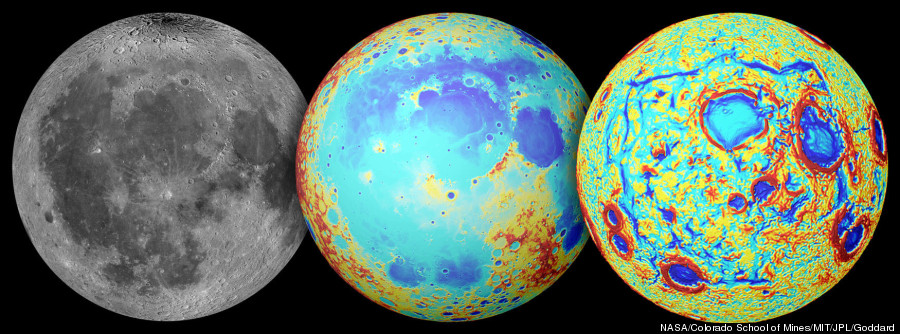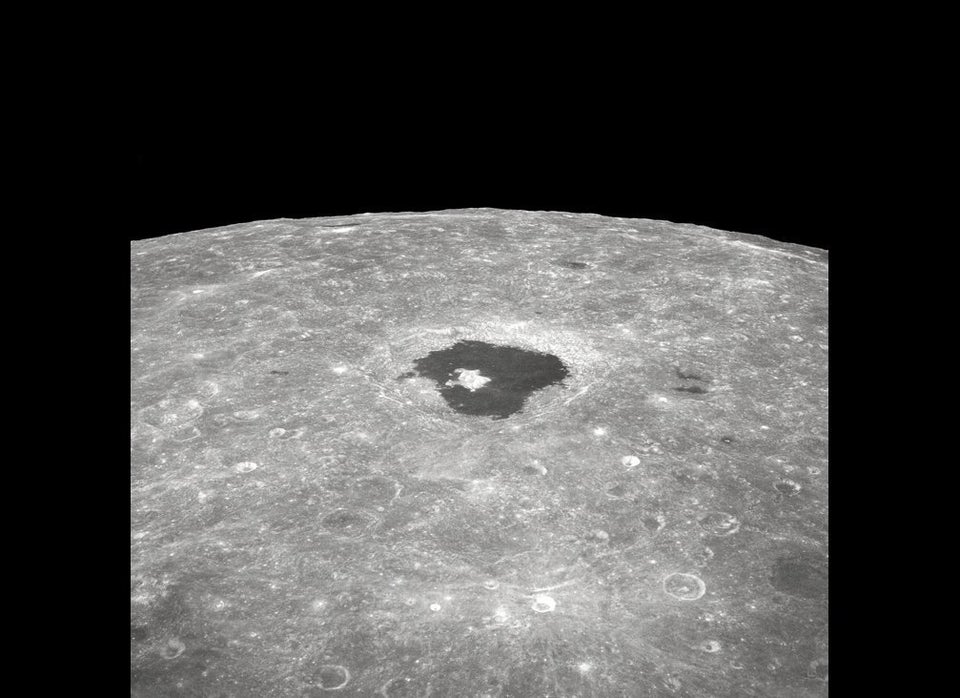"How many people have looked up at the moon and wondered what produced the pattern we see -- let me tell you, I’ve wanted to solve that one!"
That's Maria Zuber, a geophysics professor at MIT and principal investigator for NASA's GRAIL (Gravity Recovery and Interior Laboratory) mission to understand the moon's interior, according to a written statement from MIT.
Previous theories held that an asteroid created the massive Oceanus Procellarum basin on the lunar surface -- often called the "man on the moon." But Zuber and a team of colleagues at MIT, the Colorado School of Mines, and NASA say they've found a new explanation for the mysterious feature on the lunar surface: ancient volcanic eruptions.

Earth's moon as observed in visible light (left), topography (center, where red is high and blue is low), and the GRAIL gravity gradients (right).
According to the scientists, an asteroid would have created a circular basin upon impact. But a new high-resolution map created from GRAIL data revealed that the area surrounding the Procellarum basin is more rectangular, made up of sharp angles and structures the scientists call "gravity anomalies."
"We interpret the gravity anomalies discovered by GRAIL as part of the lunar magma plumbing system -- the conduits that fed lava to the surface during ancient volcanic eruptions," Zuber said in a written statement released by NASA.
The scientists believe that soon after the moon formed, a large plume of magma bubbled up from the interior. The temperature difference between the molten material and cool crust fractured the lunar surface, allowing magma to spill onto the surface to create the rift valleys and strange rectangular features that make up the Procellarum basin.
With one puzzle solved, the team say they're on to the next one.
"How such a plume arose remains a mystery," Zuber said in the statement. "It could be due to radioactive decay of heat-producing elements in the deep interior. Or, conceivably, a very early large impact triggered the plume. But in the latter case, all evidence for such an impact has been completely erased. People who thought that all this volcanism was related to a gigantic impact need to go back and think some more about that.”
The research was published online on Oct. 1 in the journal Nature.
